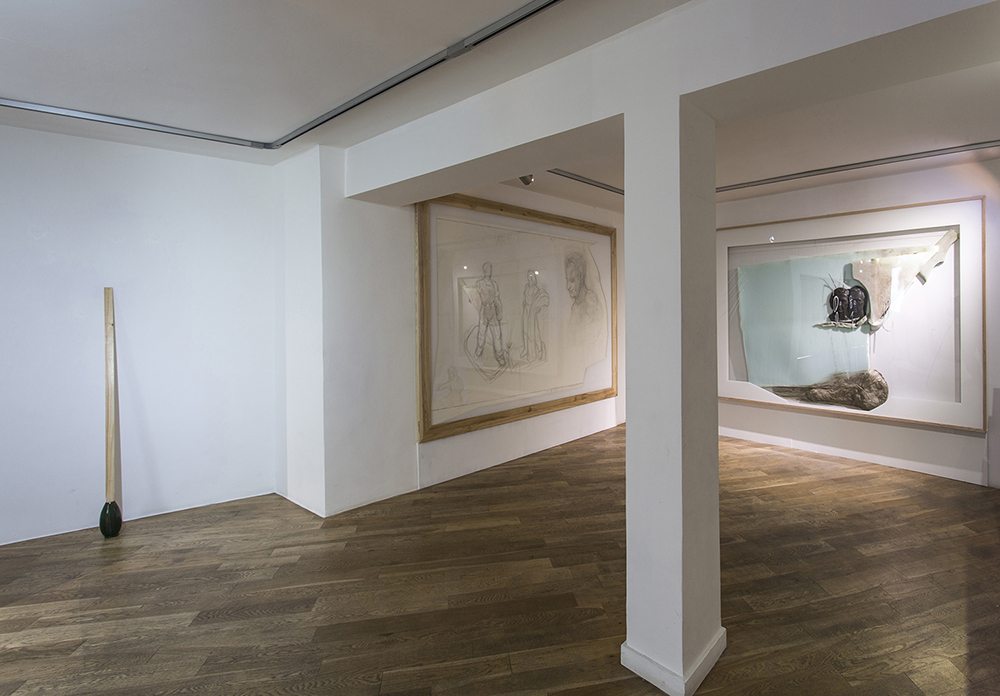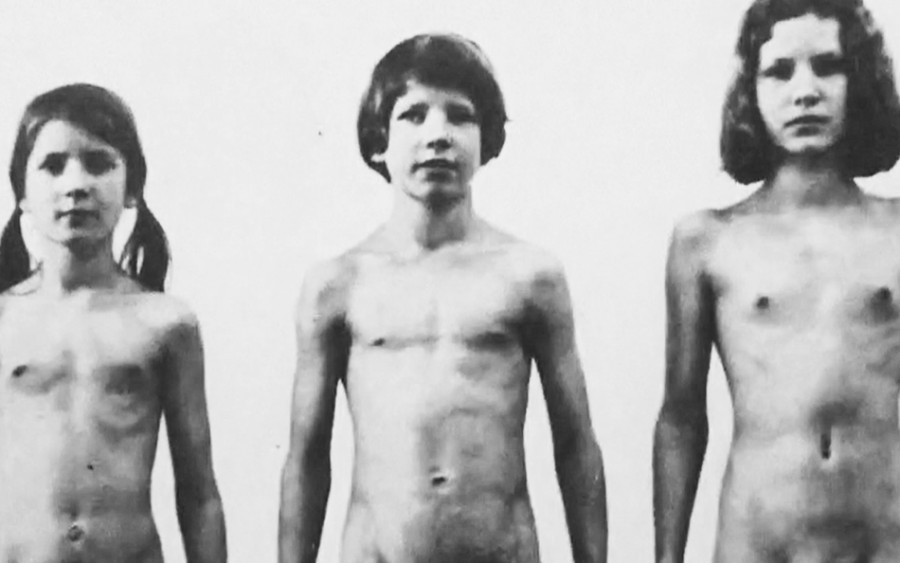Verum corpus
The aesthetics of rupture : From the communist totalitarianism to a liberalized world
Trained in fine arts academy in Vilnius (Soviet Lithuania) S&P STANIKAS’s teaching was dominated by drawing and traditional sculpture. From these artistic practices largely used in the 19th century, dedicated to propaganda, the couple of artists created an hybrid work characterized by a rupture of form, unifying sculpture, drawing, video and photography. S&P STANIKAS’s aesthetic language has been structured during the Lithuanian independence movement and the fall of the Berlin Wall. Concurrently with the political mutations, their researches generated a stylistic metamorphosis : their reflections regarding the academic conformism have been densified by the gestation of new paradigms. Their work evokes the repressive Soviet yoke and its artistic corollary, socialist realism, and expresses the strong desire to escape from it by an aesthetic rupture. Paulius Stanikas’s grandfather, also artist, was part of socialist realism movement and realized sculptures of Lenin. Stanikas’s reflection oscillates between « communist totalitarianism in which they grew up […] [and] ultracapitalism of liberalized world »1 : these socio-cultural changes fed the aspiration to a new vision of the world.
History through the prism of Microhistory
Collecting an iconography tinged with communist ideology and personal images, the two artists abolished the theoretical separation between collective History and fragments of privacy. These two kinds of visual representation are freed from immediacy of permanent present2 and remind a public past, a social structure, through a metahistorical spectrum. History can be read in the identity and subjective evolutions, intrisically linked to human condition. Microhistory favours a reduction of historiographic scale and is specifically interested in individuals. S&P STANIKAS share slices of life and private mise-en-scène in their works. They also include their family in the process : their daughter, their parents, their grandparents… The family, elementary unit of each individual, constitutes the original community. The artists sound this concept out in the light of Soviet archetype. « Things are thrown into crisis in order to interrogate the family paradigm and, beyond that, relations between men and women in the context of post-Soviet Society. »4 The structural analysis of family does not impact on the part of each individual, who is at the same time subject and body, a social identity in which coincide two temporalities : an historical space and inner worlds. « What is empirical, like our body and our individual being, becomes reality in space and time. »5 S&P STANIKAS try to escape from body and soul dichotomy, widespread by Christian tradition in Western culture.

The transgression : drives and mortification of the subjective body
Body and soul duality reveals a dialectics of body states : long-suffering and aging entity destined for death. However « a movement grew in the 19th century, between blossoming of life and elation of death, between satisfaction of drives from an ancient hedonism and mortification of the body inherent to Christianity. The first would be the symbol of vouloir-vivre, the other would be its denial in the form of ascetism. »6 Nietzsche rejected the mortification of sexual body because it damages the beginning of human life. 7 He denounced the Christian hypocrisy which created a perverted Eros. 8 The transition from communist totalitarianism to contemporary capitalism impacted on the vision of the body : it became a dual body, at the same time a non-visible body and a fully visible body. 9 Soviet communist denied uniqueness and privacy that distinguish one body from another. However « the invention of a sexuality, the creation of a delight, the achievement of a pleasure […] don’t fall under a global or community project, collective or general, religious or political, but an inner will. »10 By maniputaling the body, Soviet regime excluded subversion of desire and mysteries of sexuality, therefore the expression of individuality. On the contrary, the liberalized world of capitalist era imposes a visible body. « The more people analyze and expose modern body, the less it exists. »11 S&P STANIKAS merge this two visions : flesh exults as much as it trembles at twilight, aware of its finitude. 12 As « man is a biological being as well as a social individual »13, the body can be understood in the light of its uniqueness and the social and cultural memory that it conveys. In this quest, S&P STANIKAS found the essence of human existence, « a back and forth movement from refuse to ideal ». In between, sludge coexists with purity of light.15

Légendes 1. Isabelle Hersant, « Les “Mille sorcières“ des Stanikas et le sexe du “Communiste“ : quand le noir et blanc devient la couleur de l’irreprésentable », La Lettre «R », No. 5 : « Tabous et Interdits », p. 180-189, 2007 2. Eric Hobsbawn, « L’Âge des extrêmes : le court XXème siècle 1941-1991 », co-edited by le Monde diplomatique - Editions Complexe, 1999 3. Paul-André Rosental, « Micro-Histoire », Encyclopædia Universalis [online], October 7th, 2015. 4. Pascal Convert, « The Stanikas : Family, Sex and Politics », Art Press, No. 321, March 2006. 5. Didier Raymond, « De l’impossibilité de vivre et de mourir », Postface of the book « Du néant de la vie », in The World as Will and Representation, by Arthur Schopenhauer, Mille et Une Nuits, No 451, November 2006 6. Idem 7. Friedrich Wilhelm Nietzsche, Twilight of the Idols, paragraph 4, «What I Owe to the Ancients», 1888 8. Friedrich Wilhelm Nietzsche, Beyond Good and Evil, paragraph 168, 1886 9. Isabelle Hersant, « Les “Mille sorcières“ des Stanikas et le sexe du “Communiste“ : quand le noir et blanc devient la couleur de l’irreprésentable », La Lettre «R », No. 5 : « Tabous et Interdits », p. 180-189, 2007 10. Michel Onfray, Le souci des plaisirs. Construction d’une érotique solaire, Chapter « Liquider l’éros nocturne », Editions J’ai Lu, December 2009 11. Daniel Pennac, Journal d’un corps, Editions Gallimard, 2012 12. Hubert Reeves, Joël de Rosnay, Yves Coppens, Dominique Simonnet, La plus belle histoire du monde, Editions du Seuil, Collection Points, avril 1996 13. Claude Lévi-Strauss, The Elementary Structures of Kinship, chapters I and II, Editions Flammarion, 2008 14. Georges Bataille, « The Big Toe », extracted from Œuvres Complètes de Georges Bataille, Editions Gallimard, Fourbis, May 1988 15. Idem

